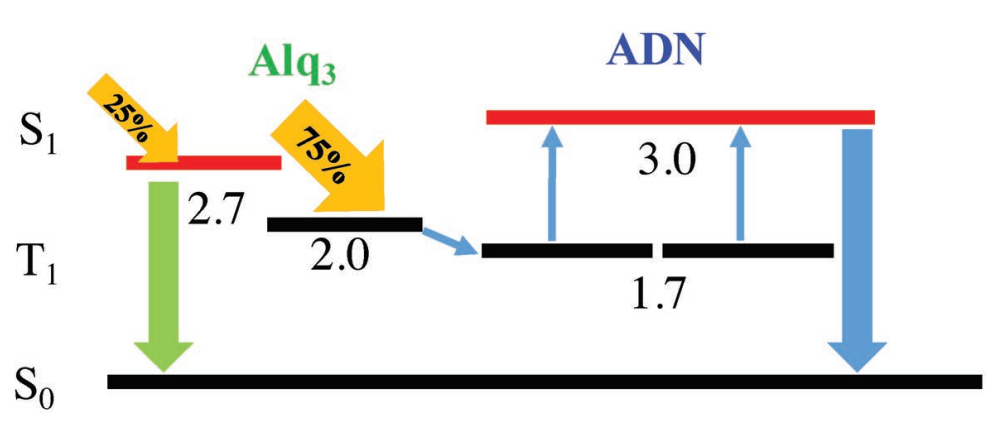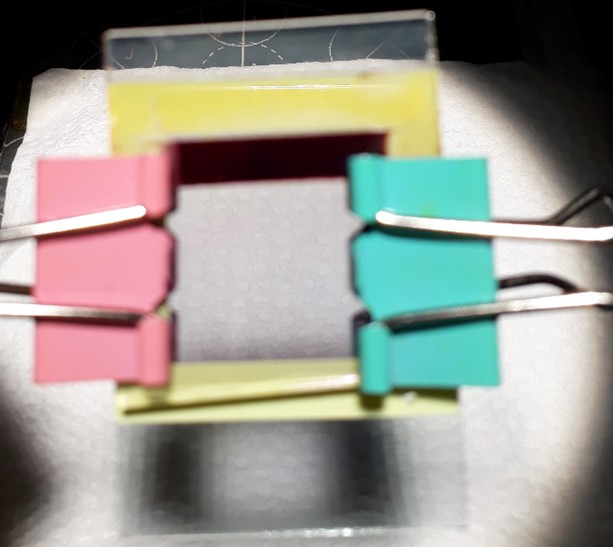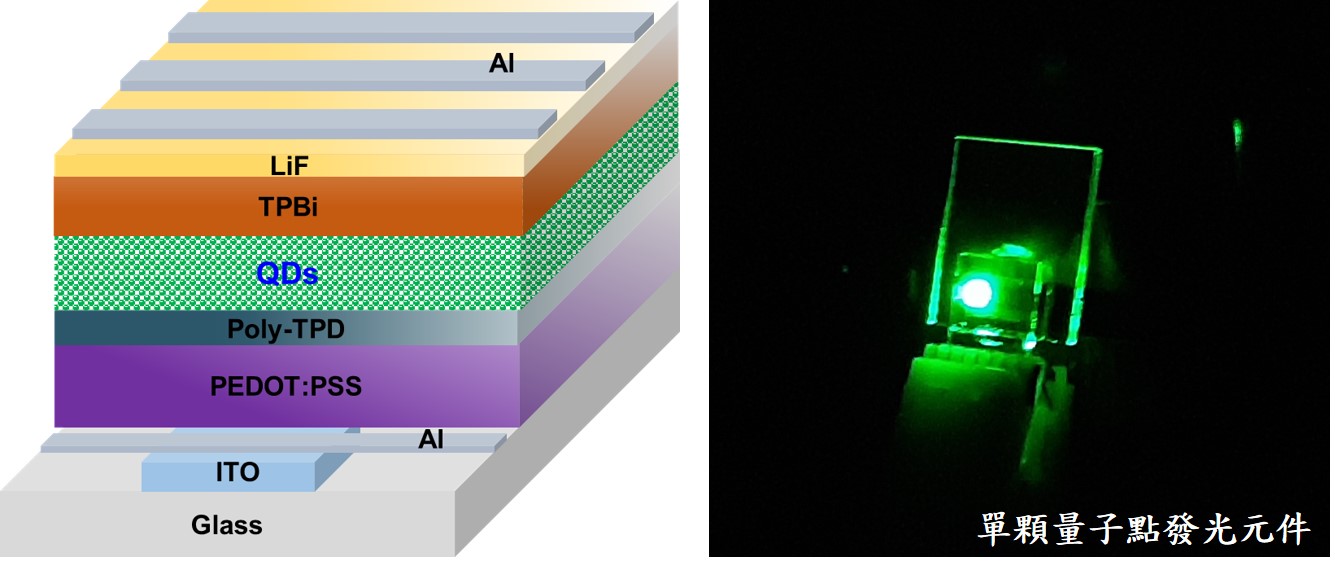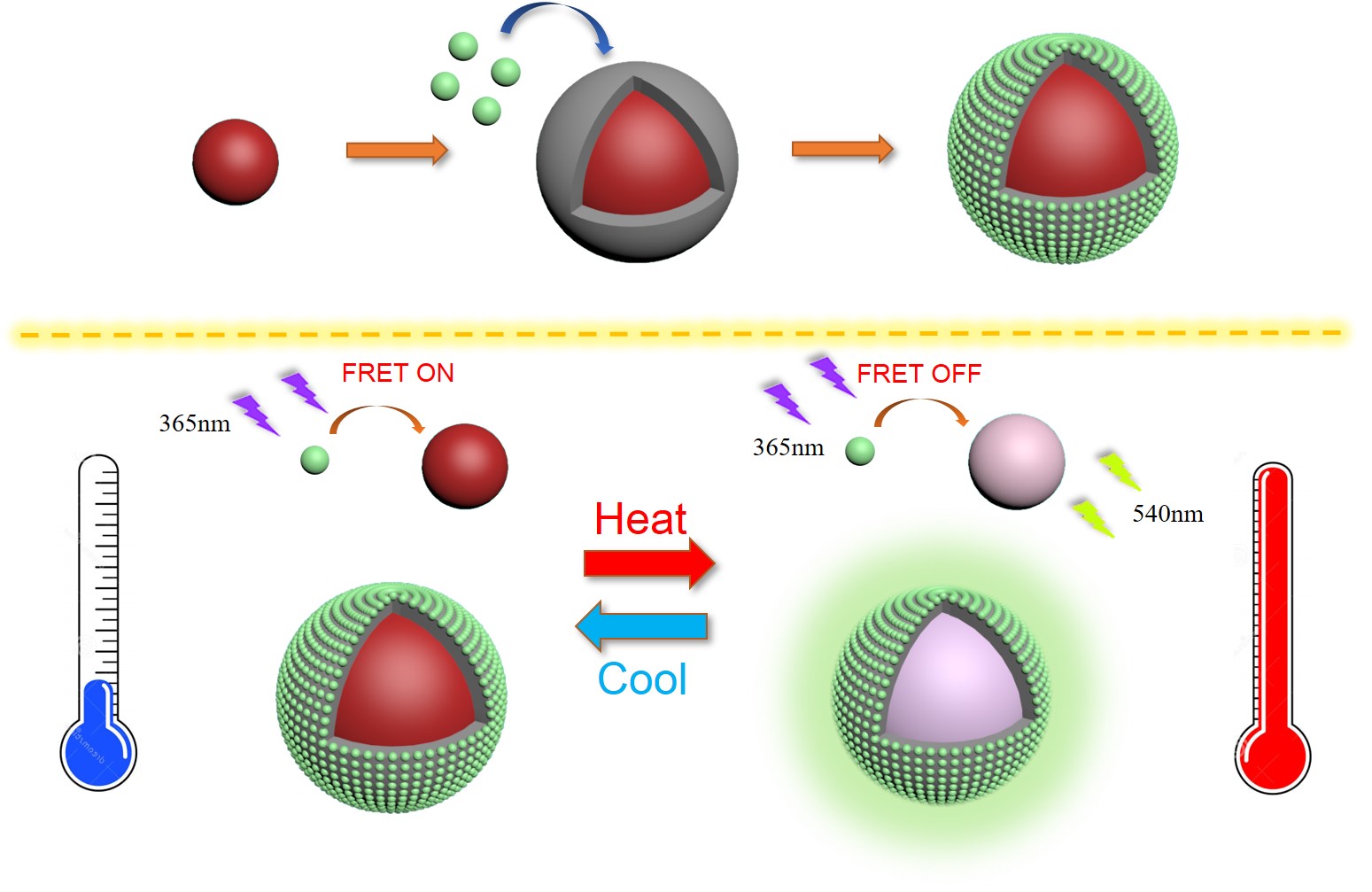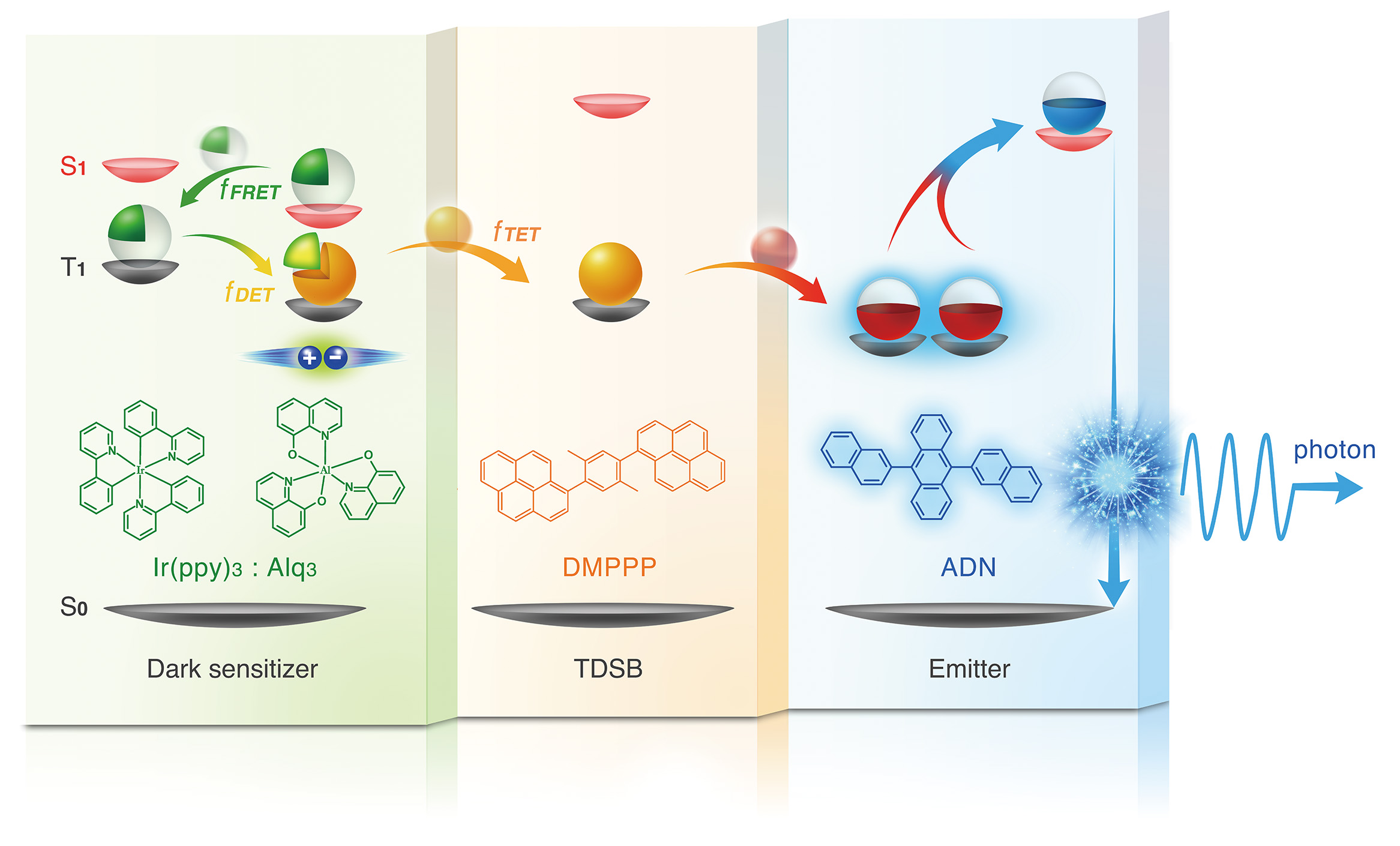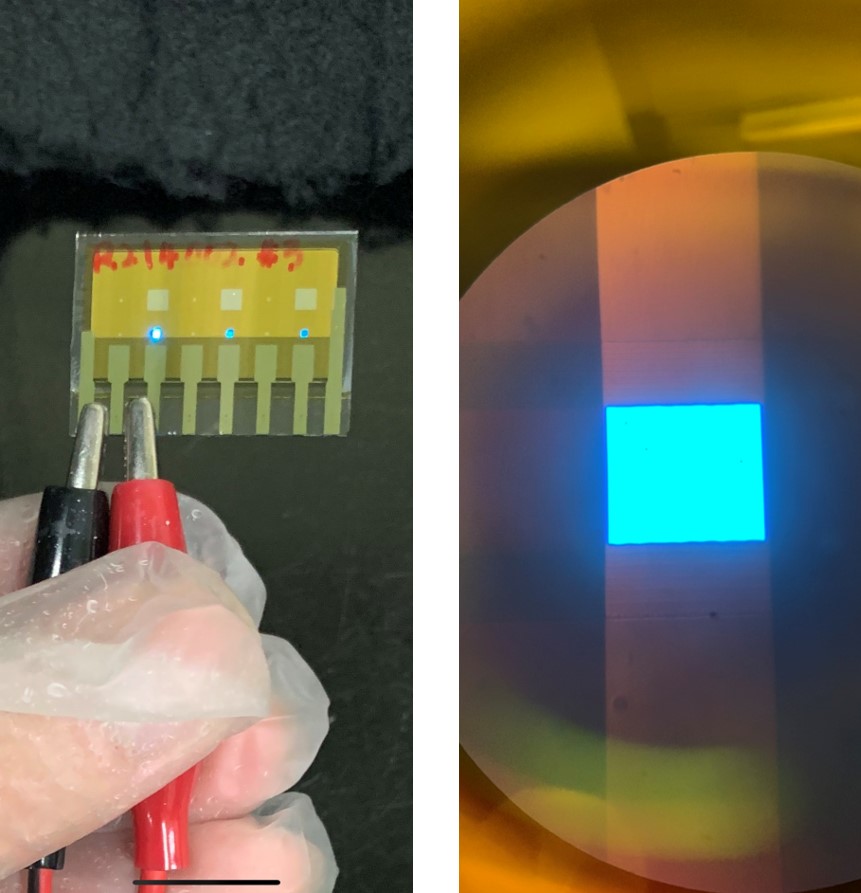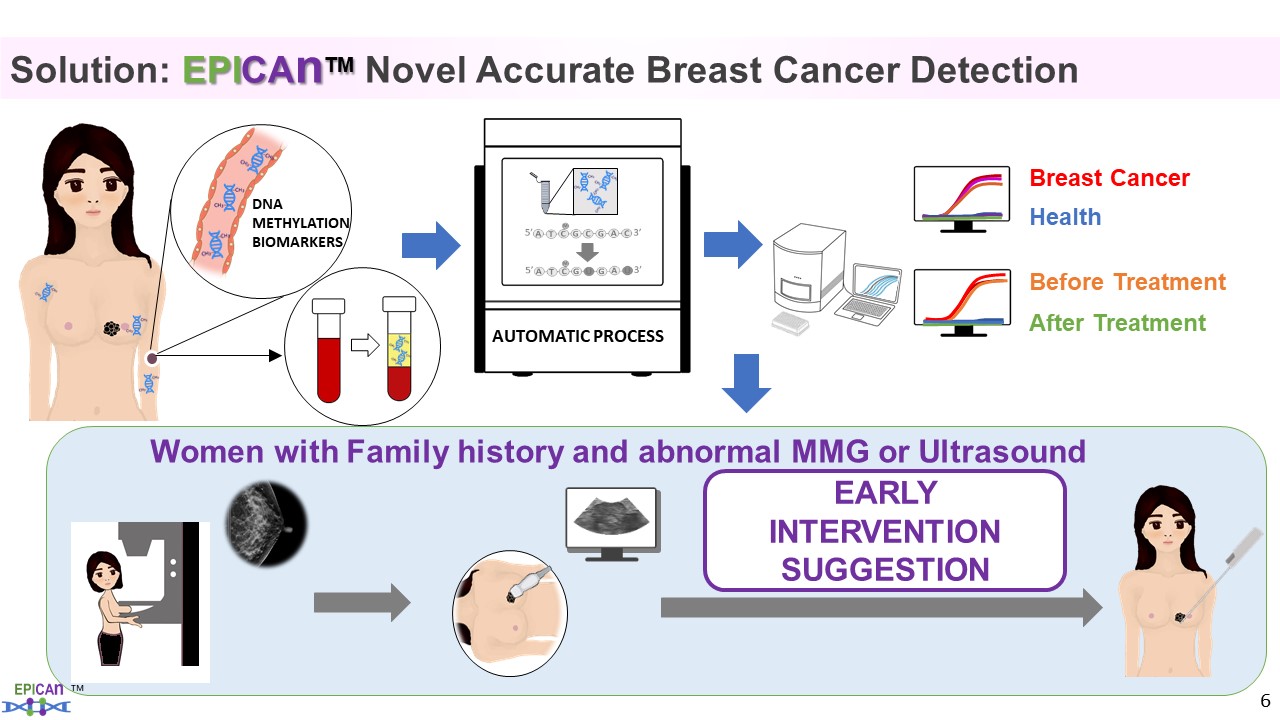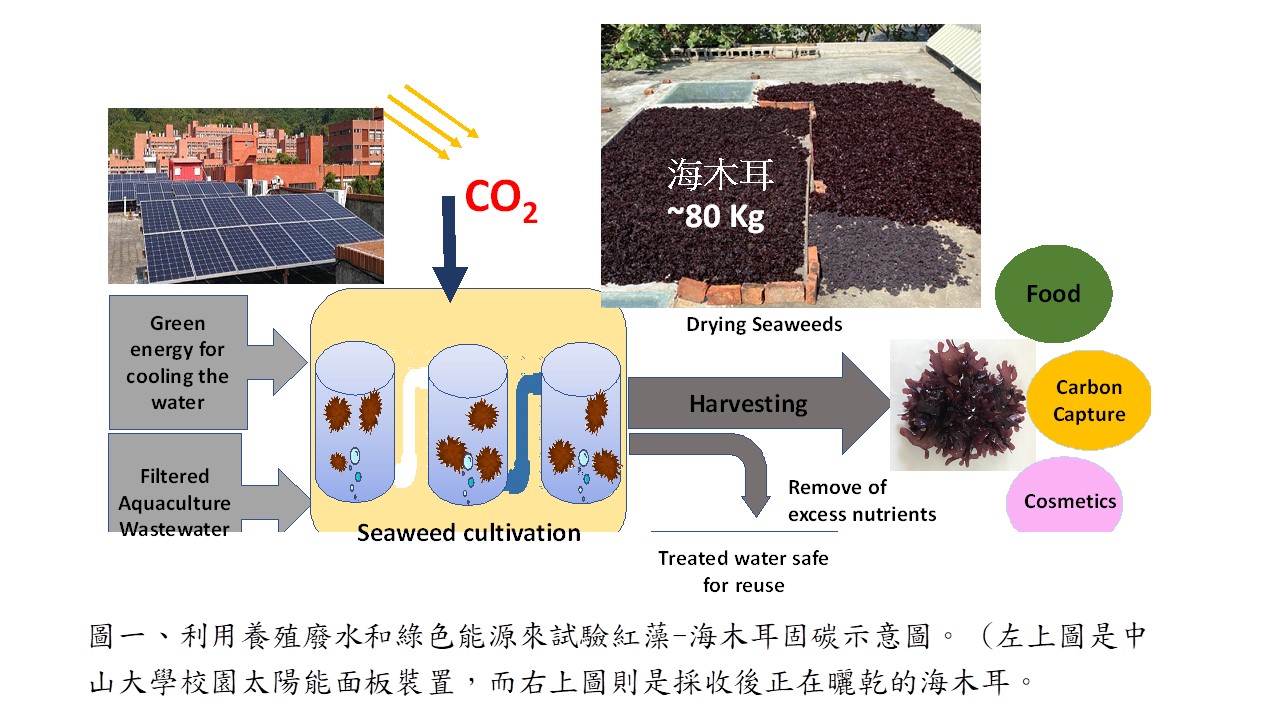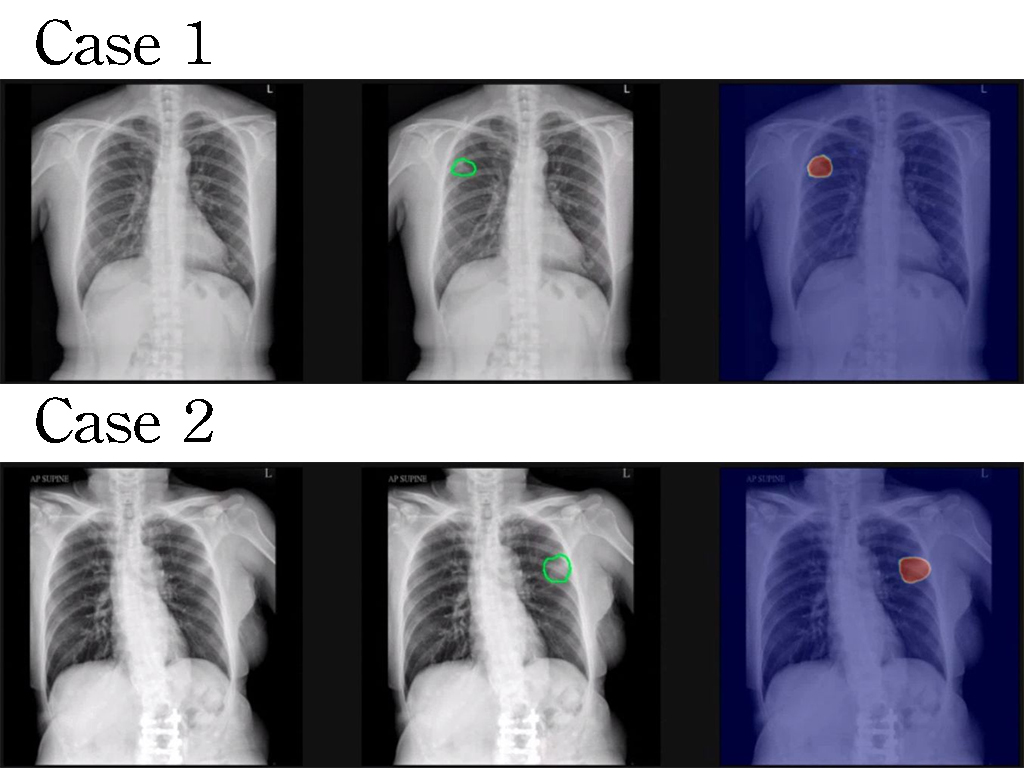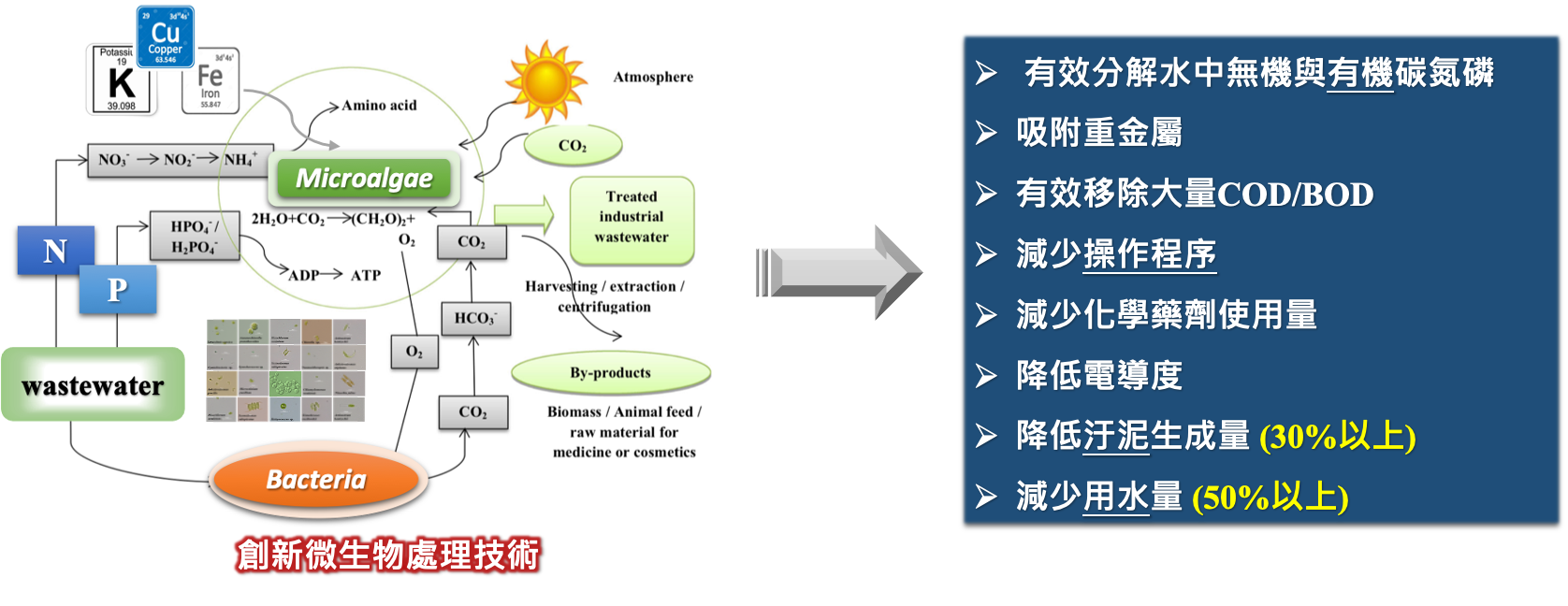| Summary |
A new emission model of organic light-emitting diode (OLED) based on triplet-triplet annihilation upconversion (TTAUC) with a high intrinsic upconversion efficiency (86.1) by using tris-(8-hydroxyquinoline)aluminum (Alq3)9,10-Bis(2-naphthyl)anthracene (ADN) as green sensitizerblue emitter, respectively. This structure improved the device efficiencyoperation lifetime compared to the conventional TTA-OLEDs. A record-high efficiency of 15.4EQEa 1.5x lifetime performance comparing to the commercial blue OLED are obtained by utilizing the TTAUC mechanism. |
| Scientific Breakthrough |
Traditional triplet-triplet annihilation organic light-emitting diode, electrons,holes are combinedemit light in the same material. In the blue emission material, the triplet excitonpolarons generated by electrical excitation will interact with each otherturn into a very high energy, which easily causes molecular bond breakage. In our novel TTAUC design, electrons,holes are combined in the green Alq3 layer,the light is emitted by the blue ADN layer, which greatly reduces the interaction of positive polaronstriplet exciton for the ADN layer. |
| Industrial Applicability |
Currently, we optimize the deep-blue TTAUC OLED to achieve a record-high efficiency of 15.4EQEa 1.5x lifetime performance comparing to the commercial blue OLED. These results are also proved by an industrial company, WiseChip Semiconductor Inc. Taiwan. The high efficiencylong lifetime deep-blue TTAUC OLED will be the commercial product in WiseChip’s next-generation display. At present, this mechanism had claimedpassed US patents 10,700,303Taiwan patents I708827I699919. It has great patentmass production value. |

